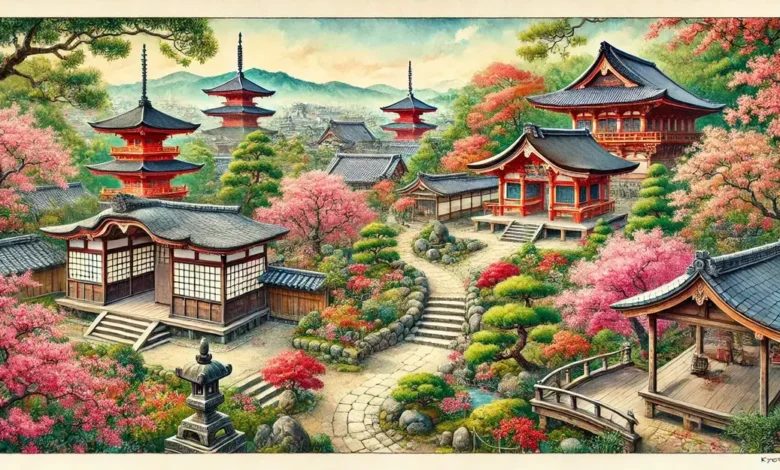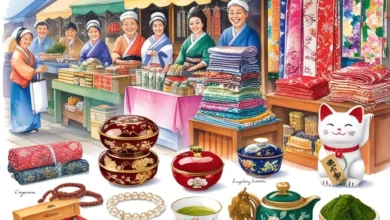Reasons to Visit Kyoto

Many people visit Kyoto for a variety of reasons, including the colorful temples, maiko and geisha culture, and the multi-course kaiseki ryori feasts. But if you’re still on the fence about booking a trip to Japan’s ancient capital, we’ve got many more reasons to Visit Kyoto.
Explore over 400 colorful shrines
Each temple is unique, but some are more famous than others. For example, there’s a temple called Fushimi Inari Taisha. It’s known for its red gates that line a path up a mountain. Another famous temple is Heian Jingu. This temple has a big garden that’s beautiful in every season. Then there’s Yasaka Jinja. It’s right in the middle of a busy part of Kyoto, but it’s still a peaceful place to visit.
So, Kyoto isn’t just a city. It’s a place where you can see and learn about Japan’s history and culture. It’s a place where you can explore and discover.

Collection of World Heritage Sites
Kyoto, a city in Japan, is really special. It has the most Unesco World Heritage Sites in the whole world! These are places that are important because of their history or culture.
In Kyoto, there are 12 Buddhist temples, three Shinto shrines, and one old castle that are all World Heritage Sites. Buddhist temples and Shinto shrines are places where people go to pray or worship. And the old castle is a place where you can see what life was like a long time ago.

More than 1,600 Buddhist temples
Kyoto, a city in Japan, is a place full of history. It has more than 1,600 Buddhist temples! Many of these temples are very old, some even thousands of years old.
One of the best places to see these temples is in an area called Higashiyama. This area is famous in Japan for its temples. Some of the oldest and most important temples in the country are here.
One of these is the Kiyomizu-dera Temple. This temple is legendary, which means it’s very famous and important.

Take a stroll through beautiful gardens
Kyoto, a city in Japan, has many beautiful gardens. These gardens were made for important people like feudal lords and samurai shoguns to enjoy. They would go there to relax and have fun.
There are many places in Kyoto where you can see these peaceful gardens. Some are in temples and shrines. These are places where people go to pray or worship. Others are in public parks, where anyone can go to play or relax. There are also gardens in ryokan, which are traditional Japanese inns.

Zen gardens are peaceful places to unwind
Relax and reflect on the world at one of Kyoto’s dry stone Zen gardens. The Zen Garden of Ryoan-ji Temple, which has 15 mysterious rocks floating in a sea of pristine white sand, is one of the greatest and most famous.

Discover the origins of geisha and maiko culture
Kyoto, a city in Japan, is a very special place. It’s known as the home of maiko and geisha culture. In Kyoto, they call geishas “geiko”. The Gion area in Kyoto is where this culture started.
In Gion, you can find wooden teahouses and traditional restaurants. These places are well-kept and have a lot of history. Some of the best places to see are Hanami-koji Street and Pontocho.
If you’re lucky, you might see a geisha in one of these places. They move quickly and gracefully as they go to their next meeting.

Stay at a traditional ryokan or machiya
Kyoto has several ryokan (traditional Japanese inns) and machiya (traditional Kyoto townhouses) that provide an insight into the city’s past. They are an excellent location to stay if you want to experience traditional Japanese lodging and culture.

Try some Kyoto food
Kyoto has a rich and ancient cuisine culture, with a variety of culinary traditions dating back centuries. Enjoy the luxury of multi-course kaiseki ryori feasts, or just unwind and absorb the health benefits of shojin Buddhist cuisine.

Try matcha-flavored treats
If you enjoy green tea, you will be in matcha nirvana in Kyoto. Matcha sweets are available everywhere and include ice cream, chocolate, cookies, cream puffs, cakes, and traditional yatsuhashi confectionery.
Consume traditional sake
Sake has been produced in Kyoto since the 16th century, with the Fushimi district housing several of Japan’s most famous sake distilleries. Most destinations give the opportunity to try some of their finest, with a wide range of flavours available.

Explore samurai castles
Kyoto is home to a number of historically significant samurai castles. Nijo Castle is most known as the old official Kyoto residence of Japan’s strong Tokugawa Shoguns, who governed the country for about 250 years. It was built to show off their wealth and prestige, and it’s a must-see for its ninja-proof chirping nightingale floors.

The Kyoto International Manga Museum is a must-see
The Kyoto International Manga Museum is Japan’s largest manga museum, displaying the country’s history of manga and manga publication. With over 300,000 comics and manga-related exhibitions, it’s a must-see for every pop culture aficionado. If you’re tired of temples and shrines, pay a visit to this manga shrine.

Kyoto Matsuri
This is all about commemorating Kyoto, Japan’s former imperial capital. The Gion Matsuri is Kyoto’s largest yearly celebration, and the Jidai Matsuri Festival, held every October 22nd, is the festival of the ages. The event comprises over 2500 persons dressed in clothes ranging from the 8th to the 19th centuries. The parade begins at the Imperial Palace and ends at the Heian-jingu temple. Regardless of the celebration, you must see the Kyoto Imperial Palace.





